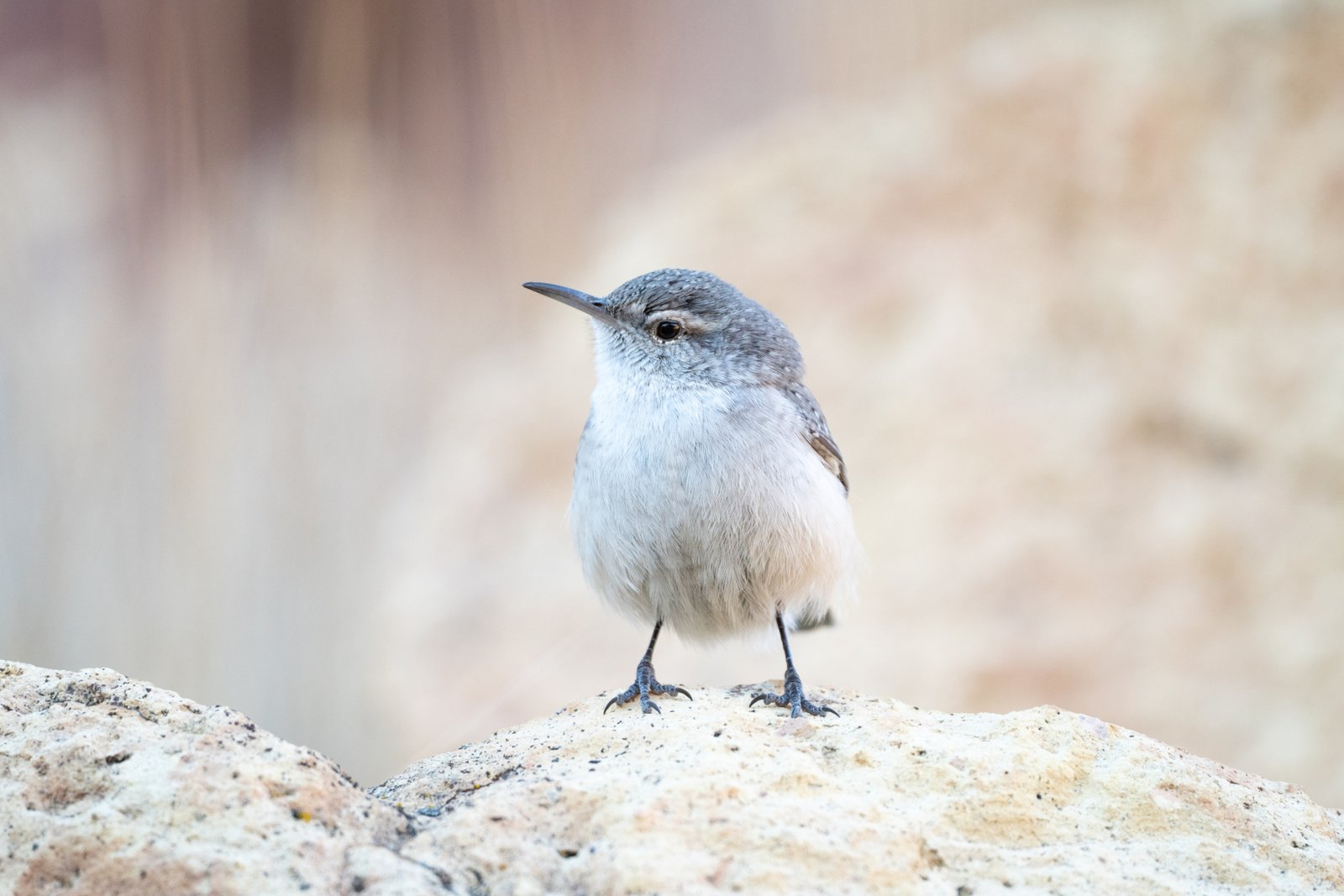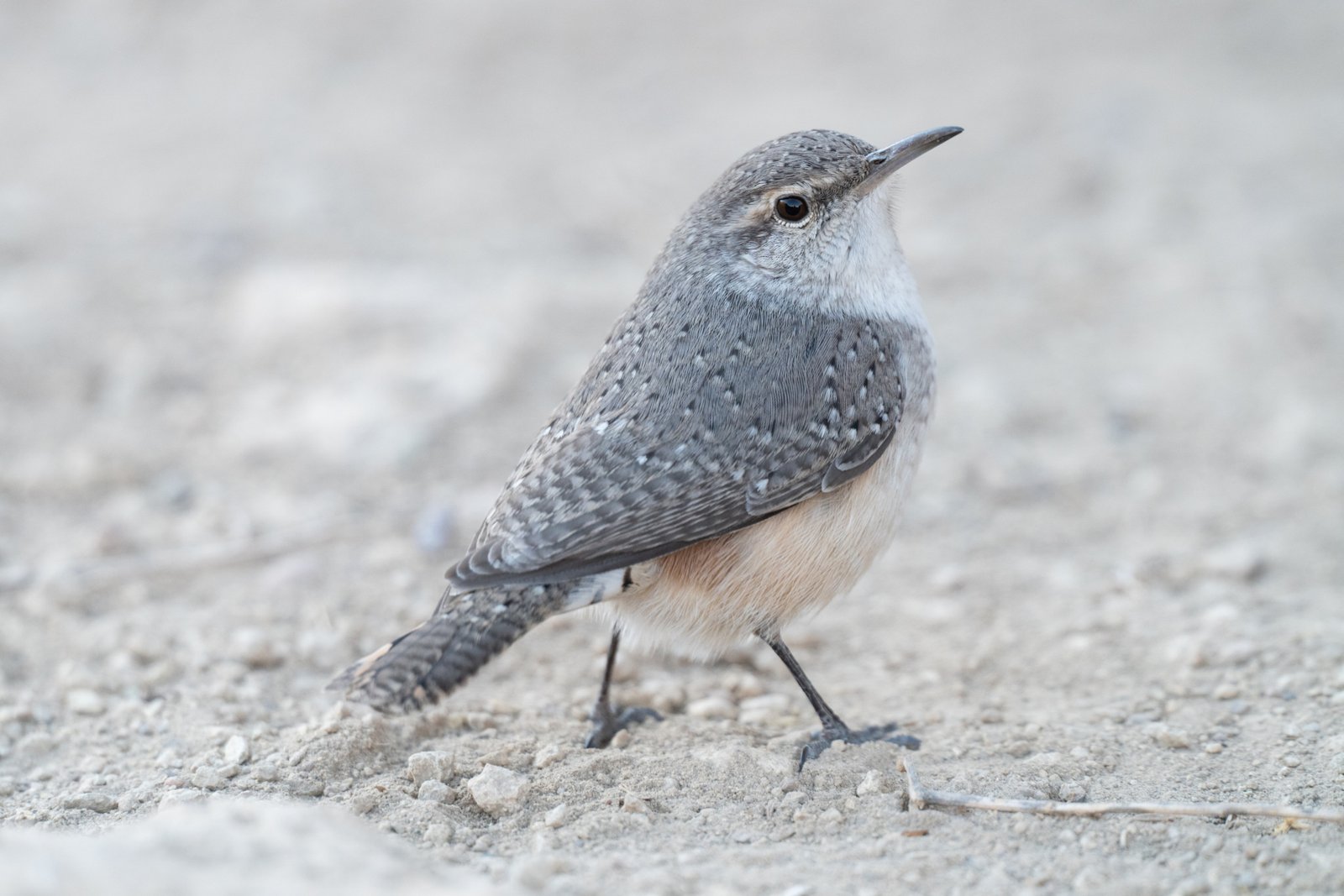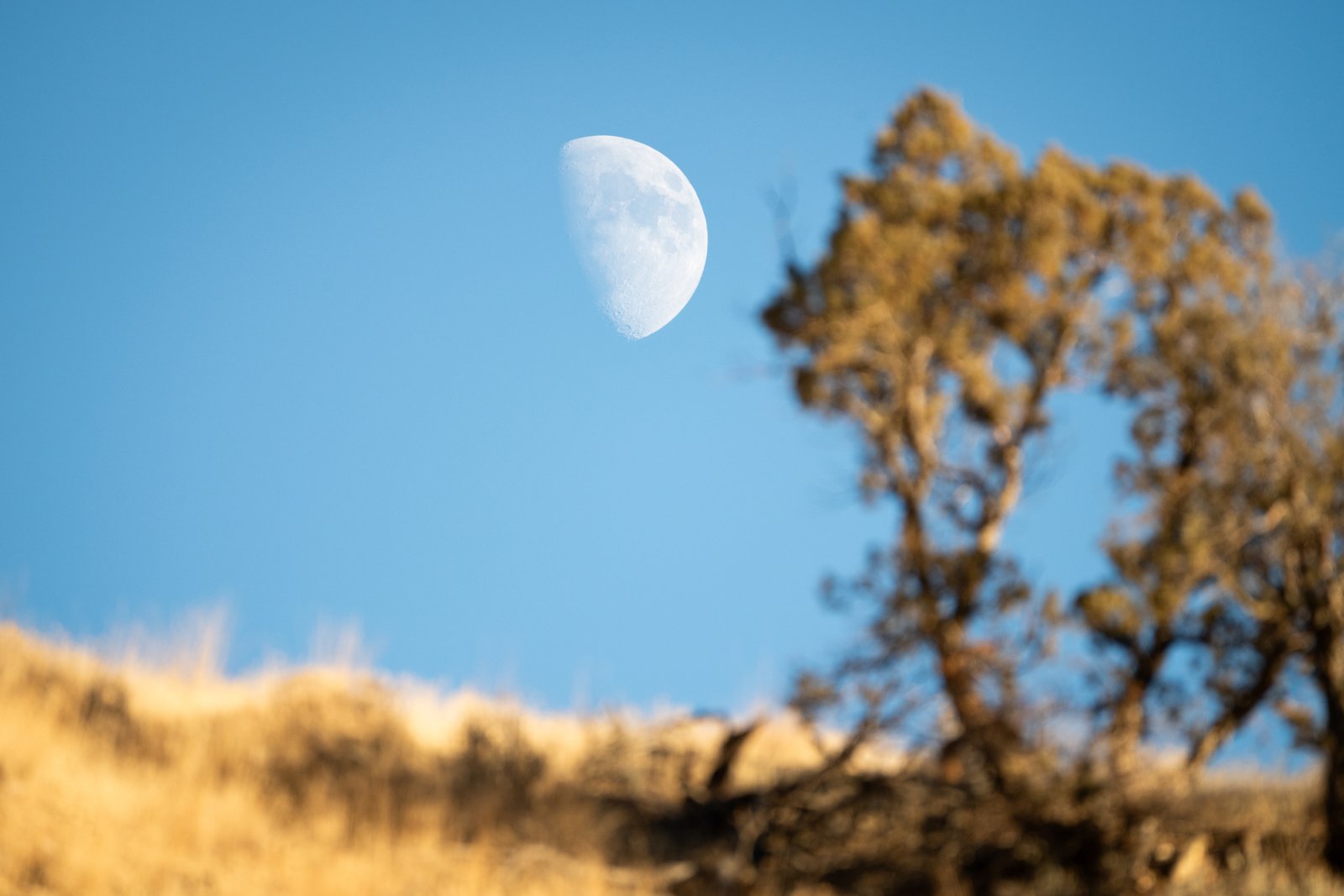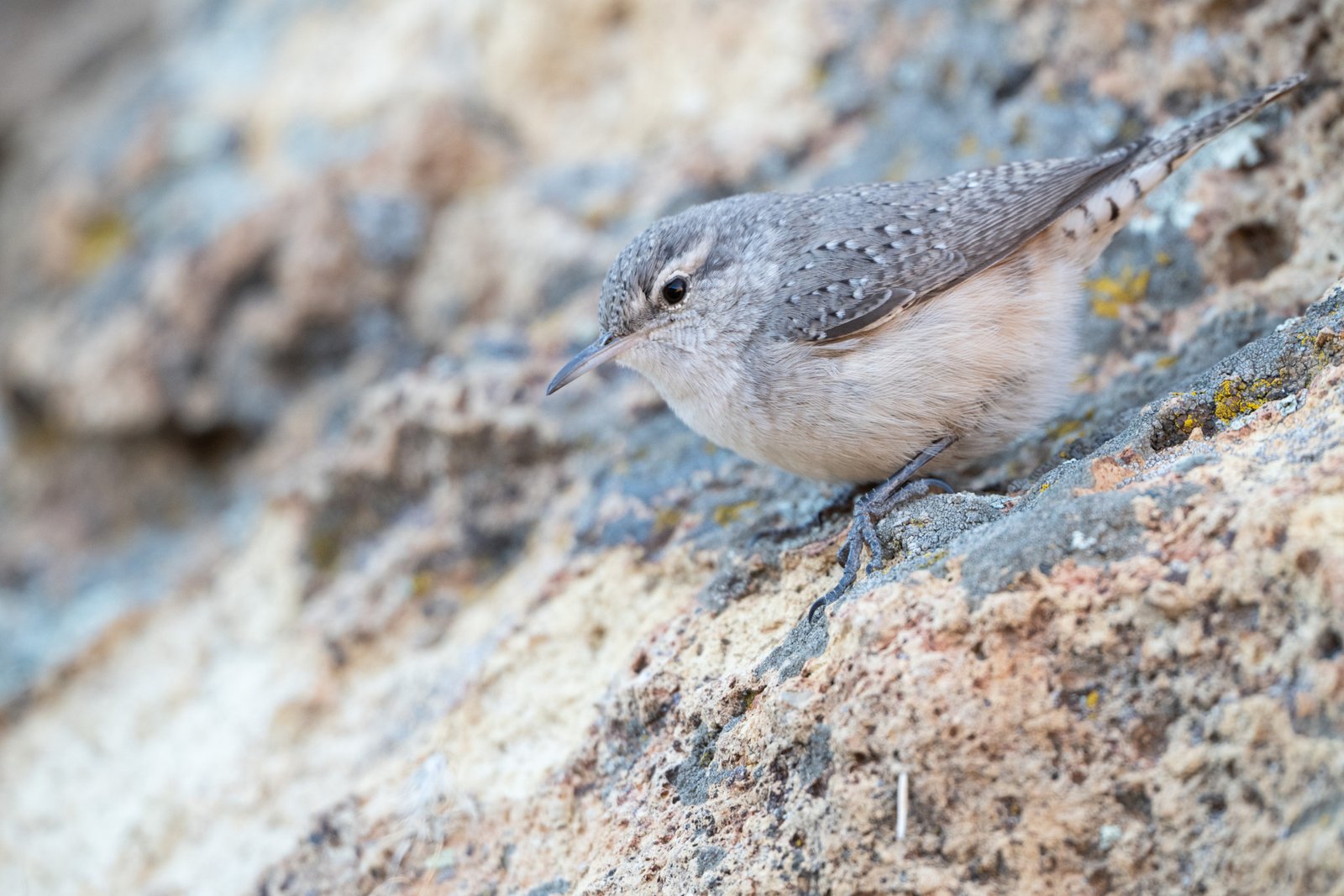I stepped out the door on a chilly afternoon in mid December hoping to find a raft of river otters that’s known to haunt the Crooked River in Central Oregon. Yep, a group of river otters in the water is called a raft! How cool is that? More on them in another article…
After two hours spent scouring the river, I came up empty handed, and decided to head for home. My fingers were beginning to freeze and it was 3:15pm, which meant evening was approaching fast. Lamenting the sun’s early winter bedtime, I made my merry way up the dusty trail. Just as I had given up on getting a single wildlife photo, I heard it. tick-ear. tick-ear. tick-ear (that’s how some birders interpret what they are saying. Click ‘play’ below to hear what they actually sound like).
I stopped in my tracks, and looked up the hill to my right, just in time to see a tiny sand-colored bird dart from one rock crevice to another. It was a rock wren. I have spent very little time observing rock wrens, and I usually only hear them calling from within boulder fields or rocky outcroppings. I assumed them to be shy, but this individual was anything but. This bird was energetic and rather bold, and made its way down the rocky hillside towards me until it was mere feet away. Camera at the ready, I crouched down and waited for him to land on the perfect perch. These are the moments nature lovers crave.

I spent the next ten minutes snapping frame-filling photos of the tiny bird as he moved from perch to perch, trying to figure out why the wildlife paparazzi had taken such an interest in his humble existence. To me, his existence was anything but humble. I was fascinated.
He came in so close, and appeared so fearless, that I have to assume he was as curious about me as I was about him. Little did he know, I get this way with nearly every bird I see. I am captivated when I get a view into their mysterious worlds. Even the most overlooked birds offer us insights into the inner workings of the ecosystems that we share with them.

There we were. Just me and a Rock Wren, sharing the last daylight hour in the cold desert air. Encounters like this are what keep me going out to nature, facing scorching heat or biting cold. The mere possibility of sharing space with creatures that know nothing of complicated human affairs is always enough to get me out the door with my camera in hand. I have become convinced that when we touch wildness, we tap into what it really means to be a human, and encounters with wildlife, whether a raft of river otters or a tiny, sand-colored bird can teach us lessons about ourselves and the world that we can’t learn anywhere else.
Intimate encounters with wild things, whether a rock wren, a beetle or a lizard always seems to put my place in the world into perspective. I am reminded of the poem “Love” by Czeslaw Milosz:
“Love means to learn to look at yourself
The way one looks at distant things
For you are only one thing among many.
And whoever sees that way heals his heart…”

Bonus: 3 Facts About Rock Wrens to Tell at Your Next Party
Fact 1: Rock Wrens are one of 96 species belonging to a family of birds called Troglodytidae, which is derived from the word troglodyte, meaning ‘cave-dweller’. They likely get their family name due to the tendency of many wren species to forage in dark cracks and crevices.
Fact 2: They are rather accomplished stone masons during breeding season, laying a foundation of flat rocks for their nest cups. They will even build pathways of flat stones leading into their nest cavities. This requires significant energy expenditure, as a single nest structure may contain as much as 3 pounds of stones! This tactic is not without benefit to the birds, as the stone foundations improve soil stability of nest sites and improve water drainage. The pathways appear to serve as an alarm system that alert the wrens to approaching predators like rats and squirrels (1). I highly recommend reading this article to further geek out and to see photos of these fascinating nest sites!
Fact 3: Rock Wrens are known to commonly use habitats that have been heavily altered by human beings. They have been observed nesting in coalmine soil piles, clearcuts, road cuts, train tunnels, and even garbage piles!

References
- Warning, N., & Benedict, L. (2015, January 1). Paving the way: Multifunctional nest architecture of the rock wren https://academic.oup.com/auk/article/132/1/288/5149195. The Auk, Volume 132, Issue 1
- Rock Wren Overview. Cornell Lab of Ornithology All About Birds. (n.d.). https://www.allaboutbirds.org/guide/Rock_Wren/overview
